Podcast - Adam Savage Project
Maker Spaces – Still Untitled: The Adam Savage Project – 2/14/17
We’re joined by a special guest this week–artist Jen Schachter, who worked with Adam on the White House SXSL sign and is in town to collaborate on more projects. Jen visits us from Baltimore, where she researches the cultures of maker spaces around the country. This is also our last podcast before Adam goes on tour, but we’ll be recording with him remotely in the coming weeks!
Comments (27)







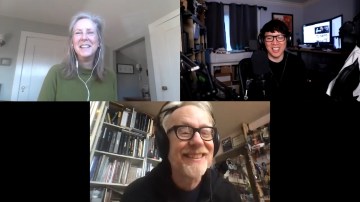
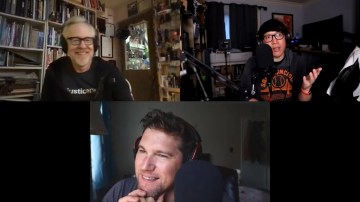



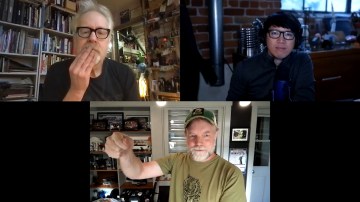

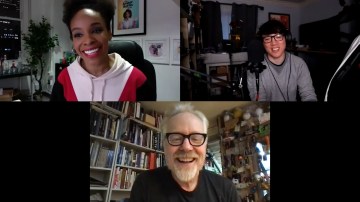


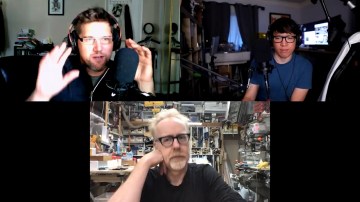
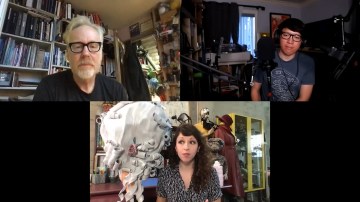
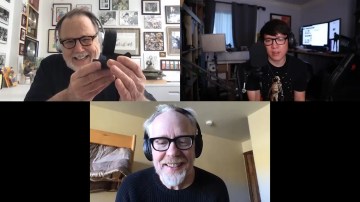
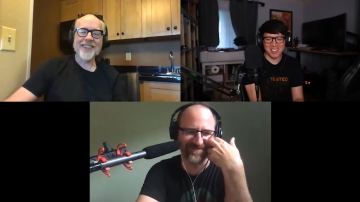
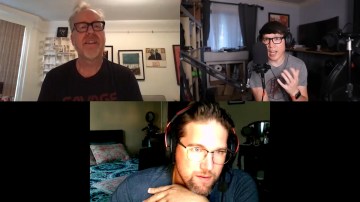

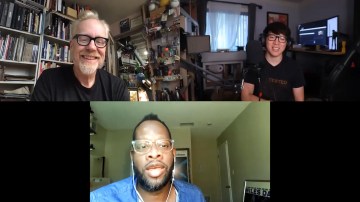
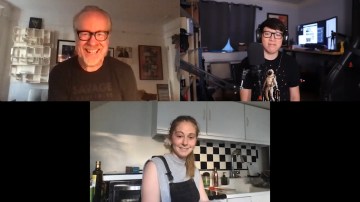

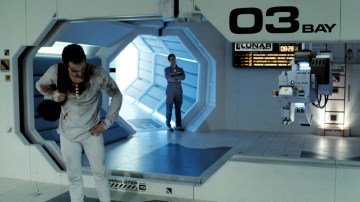


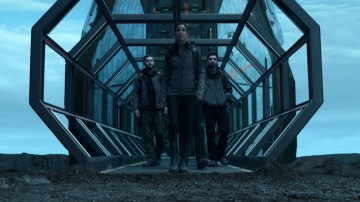


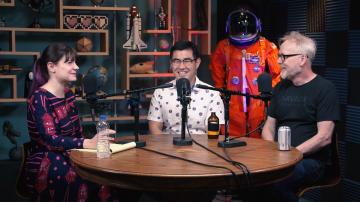



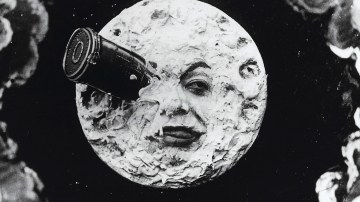
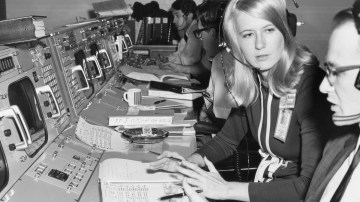
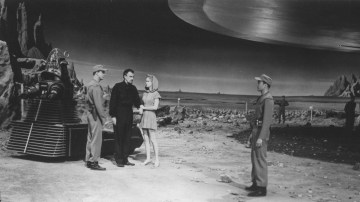
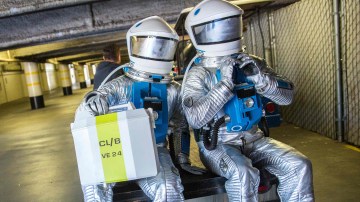

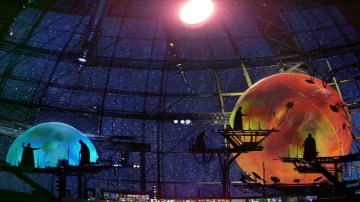


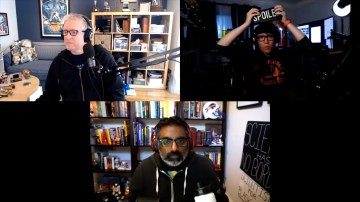
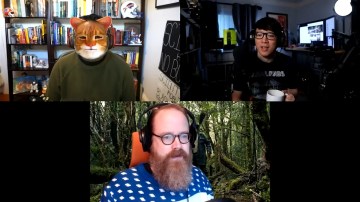
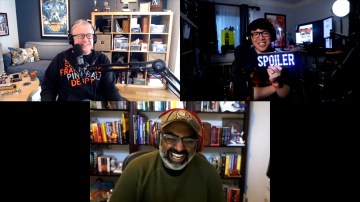
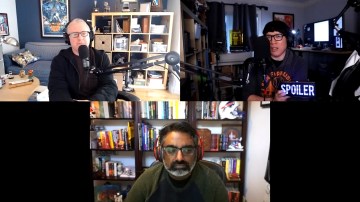
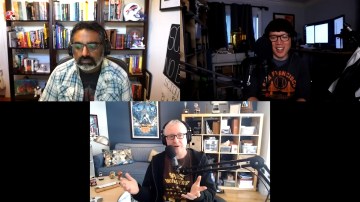
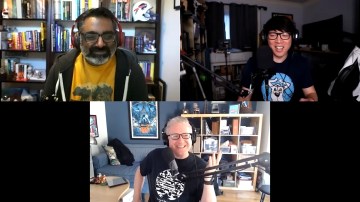
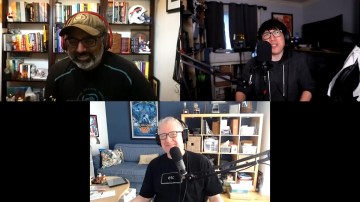
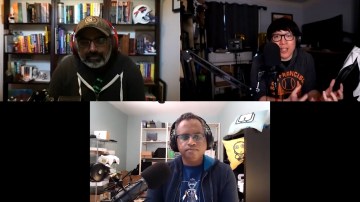

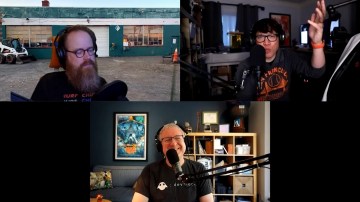

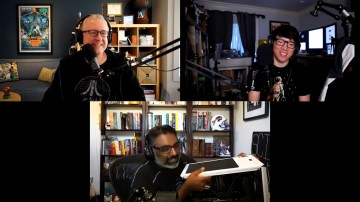
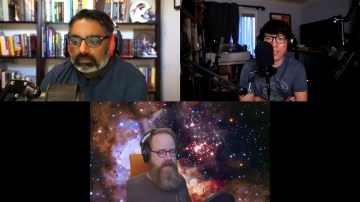



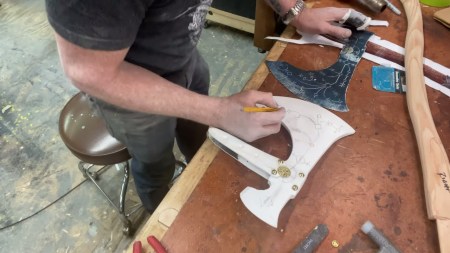





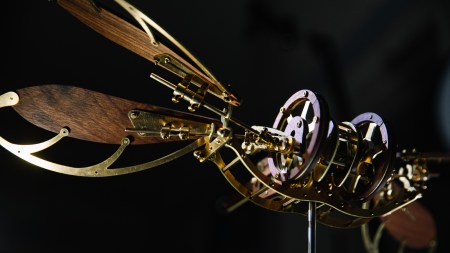
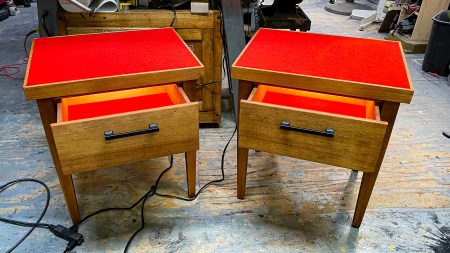
Like the show that toured with Jamie, I hope Brain Candy will come to Windsor Ontario
Unlike the show that toured with Jamie, I hope you won’t talk about it as having happened in London Ontario
,-)
See you at the show Adam ! I’ll be front row and I’m excited to see what you and Michael Stevens cook up. I really hope that SXSL keeps going in some alternative universe.
I want to talk about drawing, sketching, and blue prints. I really love that there is all the tech now that you can do all your sketches online and in 3D but I feel the physical drawing of things is dying. For an example I work in the Burning Man Regional Community. Often I am designing and then running teams to build large structures that people will be playing on or climbing on. I do all my drawing and sketching by hand on graph paper with hand measuring tools and pencils. This year for a build one of my volunteers said to me, “I do architecture digital design for companies for my day job, would you like me to bring you into the new century and have these digitized so they are exact?”
While I under stand he was only trying to help and did not mean anything negative by his comment, I prefer to work on paper and I think this is dying.
Thoughts???
Why does everyone else need large mics right in front of them, but Norm has nothing and sounds just fine?
The maker community is so vast. Just thinking about it is mind blowing. If it’s made by a craftsperson or an artist, they’re a maker. I think about all the skills I have learned mostly by trial and error or by necessity ( being poor, I learned to sew, repair my vehicles, woodworking ect.) I turned car repair into a career.
I’ve been wondering about the makerspace model for places like Indiana, where I live. Just about everyone who wants to make something either has or knows someone who has a garage, outbuilding, barn, etc. for their tools. How can you then attract THOSE people to a makerspace?
making origin story: drawing’s been in my life since practically ever. paper and art supplies were always there for free perusal. both my parents are trained wood sculptors, though, so my focus on drawing never counted as ‘making’ for me. they had to figure out ways to make things check out spatially, while i was free to ignore that if it made the drawing better. i also didn’t care much for the drawing-as-artefact, only for the things in the drawing. when i switched to digital in the late 90s, my parents mourned the loss of ‘originals’, while i was excited for ctrl-z and painting without material constraints.
the turn to wanting to make things came while i was writing my MA thesis. the last few semesters at uni, doing non-material work exclusively, and sustaining a rather high level of stress, made me crave doing something slow and manual. a history nerd friend and archer managed to infect me with curiosity for historical archery at about the same time. one day, we mused how comparatively expensive traditional archery tackle is, compared to the fact that people made these for thousands of years by themselves. maybe, so went our musing, it’s really hard to make an exceptionally good bow, but making a serviceable bow should not be impossible.
a few google searches and interesting books later, i decided i’ll just try building a bow as therapy. phoned up a shop that specialises in bowmaking supplies to order wood (no need to try learning a craft when i’m not yet able to discern what makes material apt to the job), had a lengthy and informative chat with the owner who talked me out of the super-elaborate bow design i was starstruck with, and recommended something simpler for my first bow. i made that bow, made a slew of mistakes, but learned a ton, and i had my very own bow to go to the archery range with.
that was the hook. 🙂
I started out as a pen and ink draftsman in high school. I converted to computers after college (English Lit and Archaeology). I’ve done some books and maybe 15,000 illustrations over the last 35 years-mostly digital. My own design work is always by hand. I find I better understand how something works if I draw it. It’s also faster and lets me test out a lot of variations. This drawing is me figuring out a steam engine part at The Henry Ford Museum.
I love hearing about maker spaces! Welcome, Jen!
Will’s idea at 15 minutes to bring in stuff to take apart is the COOLEST idea I’ve heard. Giving such a thing to talented makers would be such an astounding inspiration to so many kids and adults of all kinds.
This is precisely why I am so enthusiastic for the new Tested segment Bits to Atoms. It really ought to inspire people to go out and make.
Seeing the iterations of making would be hard for some projects that just don’t look like anything when half done. Sometimes one person’s half-done project becomes someone else’s start – sometimes physically, sometimes conceptually, sometimes both. Pinning them up to the wall might make them too sacred to repurpose. Perhaps partnering with a surplus store/warehouse would be beneficial, too.
Looking forward to more great podcasts like this one.
P.S.: Good job veering away from politics. You’re on the right track.
At a makerspace in Saint Louis, someone did an Arduino workshop a few years ago. After people had some basics down, a bunch of people raided Goodwill thrift stores and grabbed RC cars and other stuff. Hacked them open, splice in wires and rigged up an arduino into them to make them autonomous. Fun stuff!
Will’s comment about taking things apart brings back memories of when I volunteered at a local interactive science museum more than a decade ago. Once a month we’d have a Take Apart Day where kids (and their parents) could take apart donated computers, VCRs, vacuum cleaners, phones, and more. So much more. We’d provide a room with tables, tools, guidance if needed, and enough supervision to keep injuries to a minimum. The kids had a blast, many learned something, and maybe went home with magnets taken from the guts of a hard drive or something. The room afterwards was always quite a sight; it’s amazing how much dismantling can be done by a roomful of motivated kids! Although I remember one young fellow who completely took apart a keyboard and then put it back together again.
I’ve just checked their website. They still have a Take Apart Day on the first Saturday of every month…
I work at a design firm and one of the first things our product designers do if they are asked to design something they aren’t familiar with is to buy a variety of that product and take them apart. That way they learn how they are constructed, and what clever ways other designers have improved them previously.
The problem with encouraging bringing things into a maker space to take apart is that volume of donation often exceeds capacity for storage, use, disassembly, and organization. It gets extra bad when you have a few key members who refuse to let something bulky and hard to use get thrown away because its a “really useful thing for project X” … but project X is something that nobody ever actually implements, and which potentially (by taking up space if nothing else) prevents other projects from being done.
How about 1 omnidirectional mike right in the middle of the table? To adjust relative volume you slide the mike nearer or farther from the person whose volume needs adjusting… or just have them move their chair nearer or farther from the table.
–Paul E Musselman
LadyJade414, I think I saw one in the Fremont area of Seattle as we drove through (rats!… my Google Fu reveals that it has closed). I am sure they are around (Google reveals this: http://makeitlocally.org/ ). Through Meetup.com I go to a sewing/crafting gatherings in Shoreline.
My maker origin story is that my mother attended the Rhode Island School of Design to become a theater costume designer, but left after a year or so to work for a jewelry store. Then she married an Army officer and used her creative talents to sew her kids both clothing and spectacular Halloween costumes.
My Christmas present from her when I was eight years old was fabric, interfacing and a bunch of other sewing supplies. I made my Barbie dolls and trolls clothing, and created their tiny home furnishings from felt, cardboard and the wax from wax candies. Then my mother died when I was eleven. I took home economics classes instead of foreign language classes to spite my multilingual dad.
In college I met a friend at an “intro to engineering design” class where I used my sewing experience as something that could be applied to the class. Which surprised her, since she also sewed. And then she set me up on a blind date with a guy from her high school (the “one” that carried a briefcase)…. seriously, I can only describe this as “love at first sight.”
But what made it real was that we had to survive a very crucial test: working together. I talked him into commuting from his parents’ suburban house to the college dorm. Somehow we got the idea to make loft beds and monster tie died velvet pillows (the latter because I frequented a fabric story that sold the stuff by the pound). So I learned how to use a saw and drill, and he learned how to die fabric… and his mom still talks about how we did that at their house. We moved into an apartment after one year in the dorm, though I heard from friends that those two loft beds floated around campus for several years (including a couple of the monster velvet pillows).
In the end we have worked together on many projects. The end result is that we live in a house that I designed (using a CAD program written on 5 1/4″ floppy disks with while breastfeeding a baby*), he milled and installed all of the woodwork, I installed the closets, he painted many of the rooms, I made most of the window coverings (he also made the long curtain rods that I sized using MathCAD), he made several bookshelves, I landscaped the yard, and he built the vine trellises, etc. etc.
Our teeny tiny wedding was just a few days after the Mt. St. Helens eruption.
* That baby is a now a full grown man who knows how to use power tools and a sewing machine. (four years ago he posted a tutorial on YouTube on how to make a 3-D Dungeons and Dragon pirate ship game-board!)
Damn if you guys do a John Wick 2 spoilercast, I’ll have to ignore it until Australia gets it in cinemas on April 20th….. 🙁
I think there’s merits to both approaches. There’s nothing more satisfying for me than to sit down, use a mechanical pencil, my ruler, and a clean large sheet of graph paper. It gets my ideas out and “roughed” quicker because changes aren’t reliant on fluency with the digital program, only whether or not I can erase that line. Many times when I started going to my hardware store I’d get snarky comments when I’d ask for paper and pencil to draft what I was trying to build. Now they look forward to it and ask to watch me draw from memory what I’m trying for, it’s like a magic trick. It’s also called practice.
That said, digital drafting absolutely has it’s place when I’m collaborating post draft mode. I just don’t find it useful at all in the brainstorming/drafting phases. Again, perhaps it’s lack of fluency with the tools, and with a background originating in Graphic Design/Photoshop use, you can get fast, though never as fast as pencil and paper for scratch work. Some things assist, Wacom tablets, plugins, and getting a knack with those keyboard shortcuts.
Bottom line, I don’t appreciate that person’s snark. You’re creating. If you use poop and sticks what does it matter!? Just make sure you splat a little on him while you’re working. 😉
Hey Adam, thanks for plugging Shinola! Anything that helps bring positive attention to Detroit is great. However, you should know that while the watches are assembled in Detroit, they’re definitely not made there. The movements are Swiss made, and several of the other components are made in China. This is a big distinction for watch collectors, and one that’s been a point of contention that even involved FTC intervention.
I recently started saving home & work electronics that are garbage-bound to take apart with my 7-year old twin girls. So far we’ve dismantled a 6-disc CD changer and a Bissell Spot Clean. The girls loved it and we ended up saving bits from both to add as greeblies on a Bowcaster for one of the girl’s Chewbacca Halloween costume.
Took Will 1:06 before he had to make sure we all knew how unhappy he was with the current political situation. I am surprised it took that long! Dude, go get some psychotherapy and just be a pro here. However, kudos to Adam who has clearly gotten feedback and is sensitive to those who are just wore down from political commentary and want to come here for an escape. The word “fascist” has no place on a podcast like this. I mean…. really? Therapy.
That said, after that horseshit, it was a completely engaging episode about making. Thank you for absorbing community feedback into your ethos. Very enjoyable. 🙂
To your point about all forms of crafts being making, I absolutely agree. Adam never mentions knitting as a maker discipline (I know it’s nothing personal – there are too many to mention), but it’s one of the cheapest ones to learn and get started making. Yarn and knitting needles will run you about 5 bucks, and most fabric by itself will run you more than that. Plus there’s tons of videos on the internet to speed up your learning curve. I have heard about libraries having knitting needles and crochet hooks you can check out, which I think is awesome.
I was hoping you could have Jen Schachter get in touch with me at MakerTrackBalticon is the annual convention of the Baltimore Science fiction Society (BSFS) and the convention is Memorial Day weekend in Baltimore. This year I am creating a new “Maker Track” for the convention and would love her input, if not her participation. Thanks!
“…Would you like me to bring you into the new century and have these digitized so they are exact?”
Nope.
Easy.
Day job, writing software — in my “free” time I make things.
“A child free from the guilt of ownership and the burden of economic competition will grow up with the will to do what needs doing and the capacity for joy in doing it. It is useless work that darkens the heart. The delight of the nursing mother, of the scholar, of the successful hunter, of the good cook, of the skillful maker, of anyone doing needed work and doing it well—this durable joy is perhaps the deepest source of human affection, and of sociality as a whole.”
Ursula K. Le Guin
Probably the 555 Timer. Before there was the Arduino, we got excited by a simple chip that could just emit square waves. 🙂
A feature request for the podcast. Simple tips and tricks section. Especially if you have interesting guest like on this episode. A bit at the of a tip for makers, spaces, tools, toys…etc. would be awesome. Just an idea.
with all the talk about brain candy it got me thinking is there anytime soon that Adam will be up in the great white north? I would love to see a seminar or discussion discussed by you.